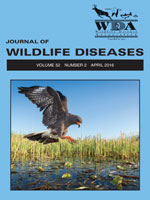COMMENTARY (1)
EPIDEMIOLOGY (6)
PARASITOLOGY (4)
PATHOLOGY (2)
PHARMACOLOGY (2)
TOXICOLOGY (1)
VIROLOGY (2)
LETTERS (11)
BOOK REVIEW (1)

No abstract available
No abstract available
